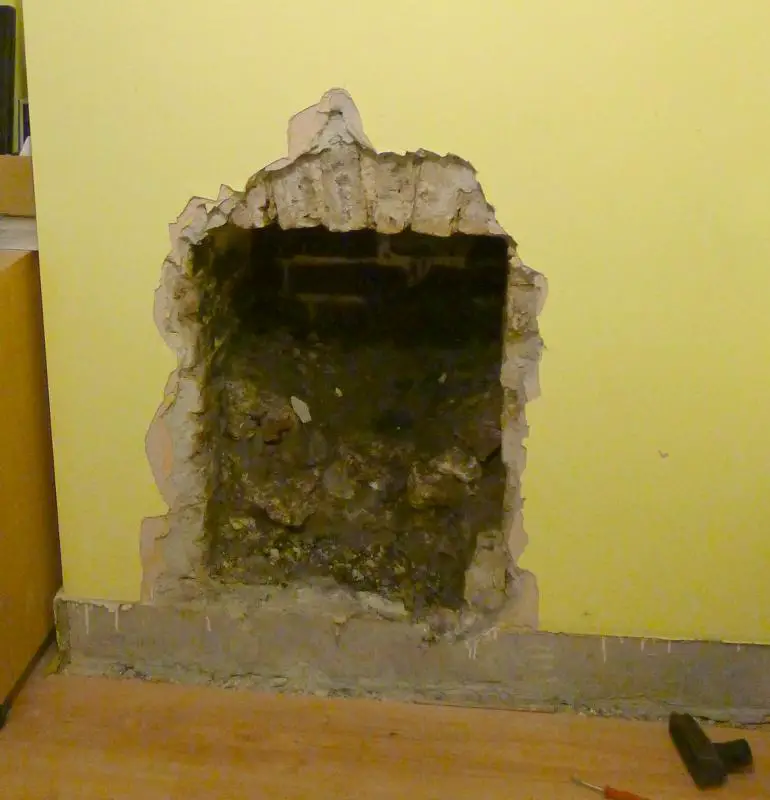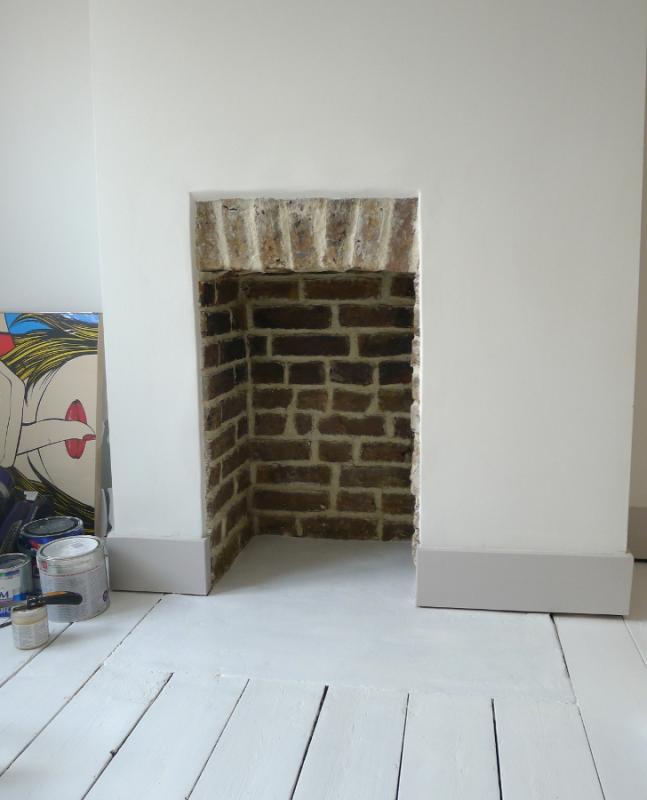Hi,
Just in the process of opening up an old fireplace in my second bedroom to create an alcove. House is a Victorian terrace built circa 1880. I have removed the blockwork infill to get back to the original opening, which is around 50cm wide.
At the top of the opening is a soldier course with one of the bricks cut to a taper and the others laid at a slight angle. A couple of these bricks are very slightly loose and the mortar between is a bit crumbly. There is no steel bar underneath or lintel that I can see by peering in to the opening. I assume it was built without one.
I'm after some advice on what to do with the loose bricks. Options would seem to be:
1. Leave it as it is
2. Attempt to leave the bricks in place, rake out the mortar and repoint
3. Remove loose bricks and refit with new mortar
4. Fit a concrete lintel
Many thanks
Just in the process of opening up an old fireplace in my second bedroom to create an alcove. House is a Victorian terrace built circa 1880. I have removed the blockwork infill to get back to the original opening, which is around 50cm wide.
At the top of the opening is a soldier course with one of the bricks cut to a taper and the others laid at a slight angle. A couple of these bricks are very slightly loose and the mortar between is a bit crumbly. There is no steel bar underneath or lintel that I can see by peering in to the opening. I assume it was built without one.
I'm after some advice on what to do with the loose bricks. Options would seem to be:
1. Leave it as it is
2. Attempt to leave the bricks in place, rake out the mortar and repoint
3. Remove loose bricks and refit with new mortar
4. Fit a concrete lintel
Many thanks



